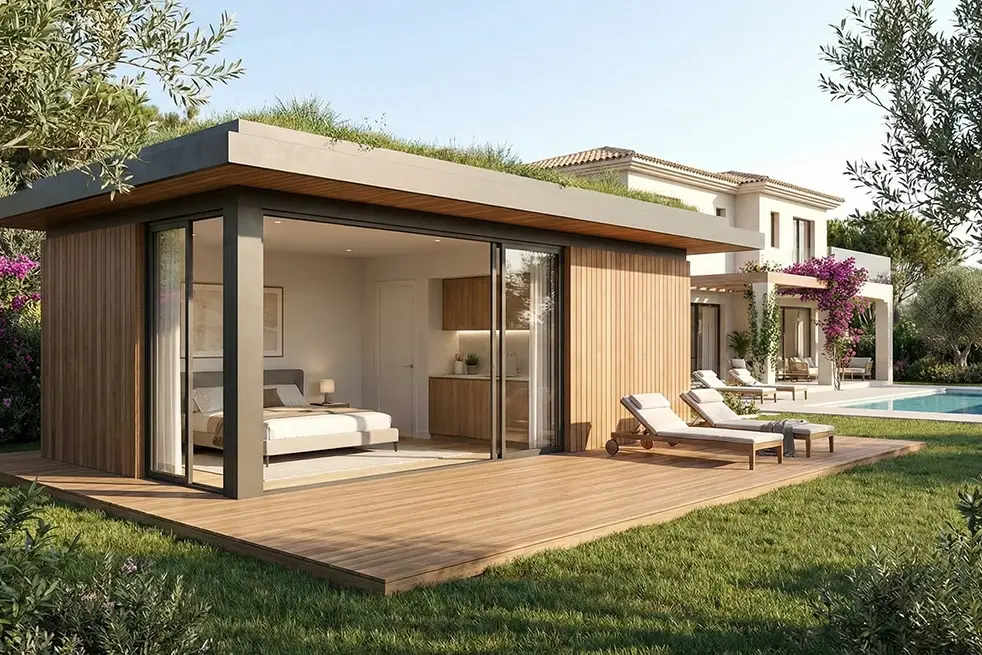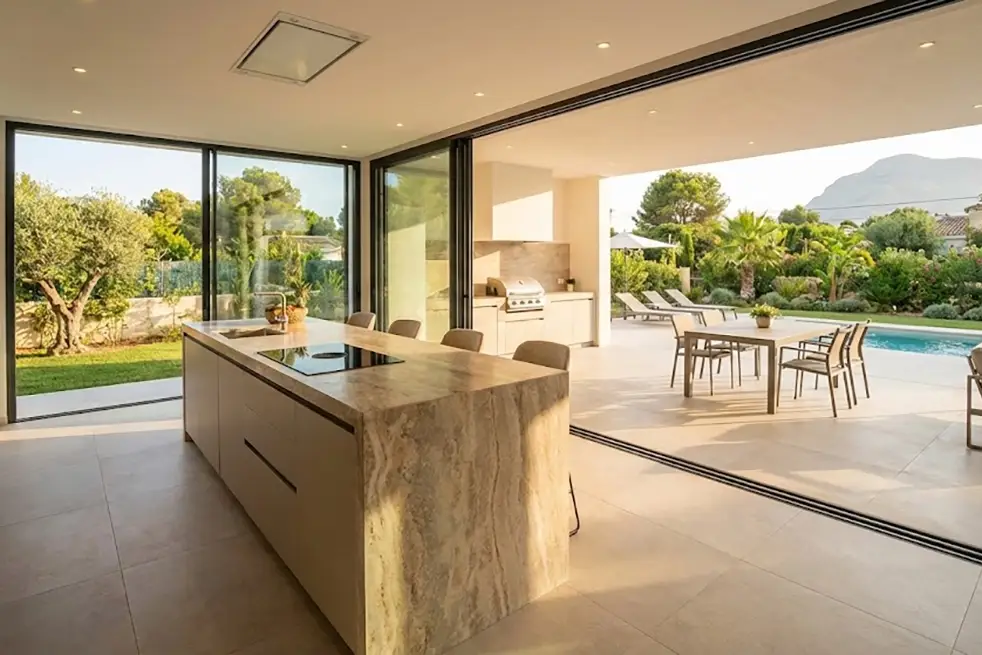In the Costa Blanca, where natural light, climate, and landscape are key features, minimalist architecture in the Mediterranean has become a coherent and highly desirable choice. Its apparent simplicity is no coincidence—it is the result of thoughtful design that combines functionality, beauty, and respect for the environment.
In this article, we explore why a minimalist approach fits so well in coastal Mediterranean areas and what benefits it offers in terms of aesthetics, practicality, and sustainability.
What is minimalist architecture?
Minimalist architecture is based on the idea that “less is more.” It removes the unnecessary to focus on what truly matters. This is reflected in:
- Simple, geometric shapes
- Natural, unadorned materials
- Spacious and connected interiors
- Soft, neutral colour palettes
- Natural light as a central design element
Although simple, well-executed minimalist architecture conveys calm, balance, and a strong connection to the surroundings. That connection is precisely what makes it ideal for the Mediterranean.
Why minimalist architecture in the Mediterranean makes perfect sense
Minimalist architecture in the Mediterranean is especially effective for several reasons. In places like the Costa Blanca, the setting already has a strong visual presence—sea, vegetation, open skies, and intense light. Minimalism acts as a subtle frame that enhances this natural beauty without competing with it.
Additionally:
- It encourages cross-ventilation and a connection to outdoor spaces, both vital in warm climates.
- It works well with regional features like courtyards, terraces, and flat roofs.
- It reinterprets local materials such as stone or ceramic in a modern way.
The result is modern architecture that remains rooted in Mediterranean traditions.
Aesthetic benefits of minimalism in the Mediterranean
1. Timeless design
By avoiding trends and unnecessary ornamentation, minimalist homes stay relevant and elegant over time.
2. Enhanced natural surroundings
A clean design allows the landscape, garden, or Mediterranean light to take centre stage.
3. Elegant simplicity
Beauty comes from balance—proportions, materials, light, and functionality—all without excess.
Practical and sustainable advantages of minimalist architecture in the Mediterranean
1. Energy savings
Minimalist architecture in the Mediterranean typically uses passive design principles: proper orientation, solar protection, thermal insulation… This ensures comfort and reduces energy consumption.
2. Easy maintenance
With fewer decorative elements, these homes require less upkeep and day-to-day cleaning.
3. Versatile spaces
Open layouts can easily adapt to new needs over time.
How to create a warm and inviting minimalist home
Some associate minimalism with coldness, but it doesn’t have to be that way. At La Quinta Fachada, we combine minimalist architecture in the Mediterranean with features that add warmth:
- Use of natural wood and local stone
- Incorporation of soft textiles and handcrafted elements
- Warm lighting and details that cast soft shadows
- Integration of greenery through patios or garden terraces
The result is a home that feels calm but also full of character.
A coherent vision for Mediterranean living
In short, minimalist architecture in the Mediterranean is not a fleeting trend. It is a way of building that respects the place, the climate, and a relaxed, authentic lifestyle. It’s a natural evolution of traditional Mediterranean style, adapted to modern times.
At La Quinta Fachada, we believe this vision is ideal for anyone seeking a modern, light-filled, functional home that integrates perfectly with the Costa Blanca environment.
Thinking of building a minimalist house in the Mediterranean? Get in touch with us. We’ll be happy to help you design a home that balances beauty and purpose.




